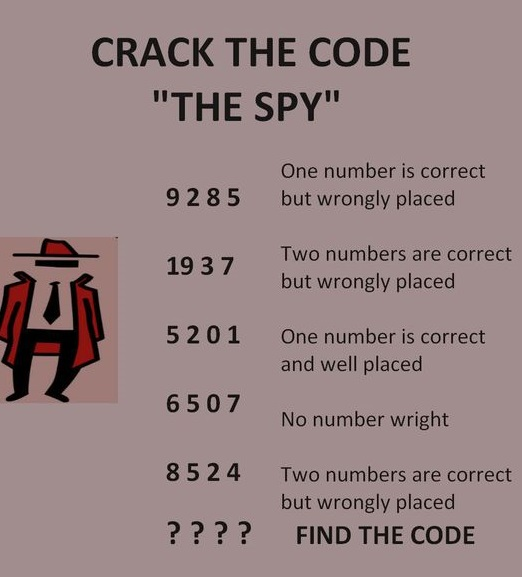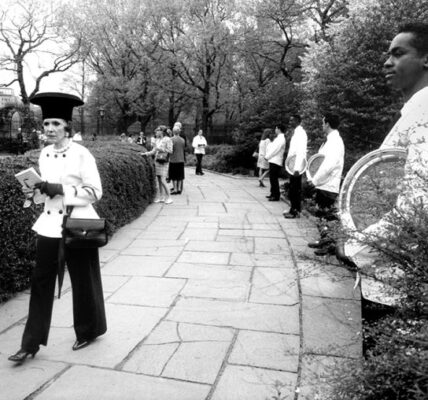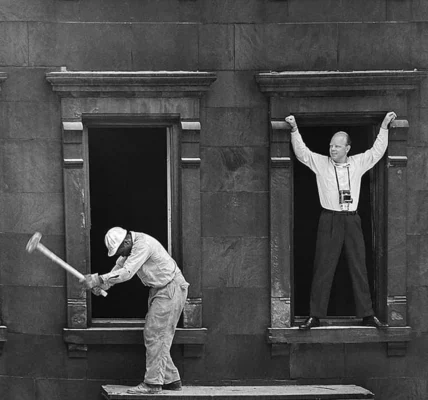Have you ever felt the irresistible urge to solve a puzzle that grips your mind until you crack the code? Today, we bring you one of those captivating challenges: “The Spy” Code Puzzle. This seemingly simple yet brain-twisting code puzzle requires you to decipher a four-digit combination based on a set of clues. It’s a test of logic, attention to detail, and patience. Ready to wear your detective hat and dive into this puzzle? Let’s unravel the mystery of “The Spy”!
Understanding The Spy Code Puzzle
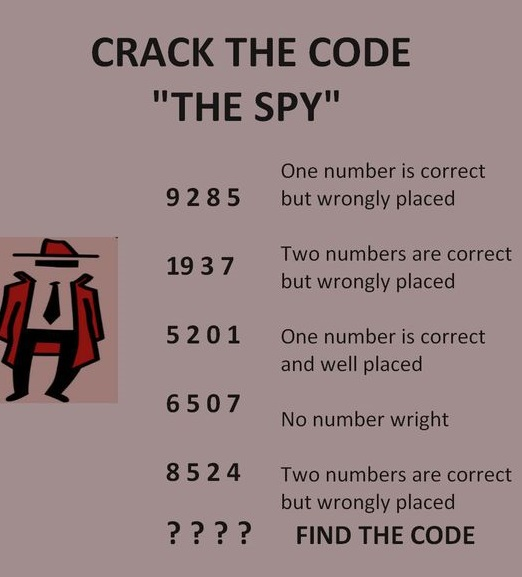
The goal is straightforward: crack a four-digit code based on a series of clues. The clues include hints about the correct digits, their placement, and which numbers don’t belong at all. Here are the clues you’ll need:
- 9285 – One number is correct but wrongly placed.
- 1937 – Two numbers are correct but wrongly placed.
- 5201 – One number is correct and well placed.
- 6507 – No number is correct.
- 8524 – Two numbers are correct but wrongly placed.
Sounds simple? Don’t be fooled—this puzzle demands sharp observation and logical deduction. Let’s first identify common mistakes solvers make before we tackle the solution.
Common Mistakes When Solving Code Puzzles
Before we jump into cracking “The Spy” code, let’s cover some pitfalls that puzzle solvers often encounter:
- Ignoring the Clue Types: The clues differentiate between numbers that are misplaced, well-placed, or not part of the code at all. Missing these distinctions can lead to incorrect assumptions.
- Misinterpreting ‘No Correct Numbers’: When a clue states that no digit is correct, you must immediately eliminate those numbers from your final answer.
- Overcomplicating the Solution: Sometimes, solvers assume the answer must be complex. In reality, the simplest approach often leads to the right solution.
With these mistakes in mind, let’s start solving “The Spy” code step by step.
Step-by-Step Solution to “The Spy” Code Puzzle
Analyzing Clue 1: 9285 – One Number is Correct but Wrongly Placed
This clue confirms that one digit among 9, 2, 8, or 5 is in the code but not in the current position. We should keep track of these digits as potential candidates.
Analyzing Clue 2: 1937 – Two Numbers are Correct but Wrongly Placed
Two of these digits (1, 9, 3, or 7) are part of the code but are not correctly positioned. This indicates that some combination of 1, 9, and 3 may be in the final code, but we need to reposition them.
Analyzing Clue 3: 5201 – One Number is Correct and Well Placed
This clue is crucial since it reveals that one digit is both part of the code and correctly positioned. From Clue 1, we know 5 isn’t part of the code, so we focus on 2, 0, or 1. Since 1 appears in multiple clues and hasn’t been eliminated, it is likely the well-placed digit.
Analyzing Clue 4: 6507 – No Number is Correct
This clue is extremely helpful as it eliminates 6, 5, 0, and 7 from the code. Now we can confidently rule out these digits in our final answer.
Analyzing Clue 5: 8524 – Two Numbers are Correct but Wrongly Placed
We now know that 8, 2, and 4 are potential digits for the code but are misplaced. We also know from earlier clues that 1 is the final digit.
Putting It All Together
Now that we have gathered insights from each clue, let’s narrow down the four-digit code:
- Eliminate Digits: From Clue 4 (6507), we ruled out 6, 5, 0, and 7. From Clue 3, we know 1 is well-placed at the last position.
- Reposition Digits: Clue 1 suggests 9, 2, or 8 is part of the code but misplaced. Clue 2 confirms that 9 and 3 are in the code, but wrongly placed.
- Correct Placement: Clue 5 indicates that 8 and 4 are part of the code, but misplaced.
Given this information, let’s construct the final code:
- 1 is confirmed as the last digit from Clue 3.
- 3 is likely the first digit, as it is part of the code from Clue 2 and correctly positioned here.
- 8 fits well in the second slot, as suggested by Clue 1.
- 4 fits in the third slot, as indicated by Clue 5.
The Final Code: 3841
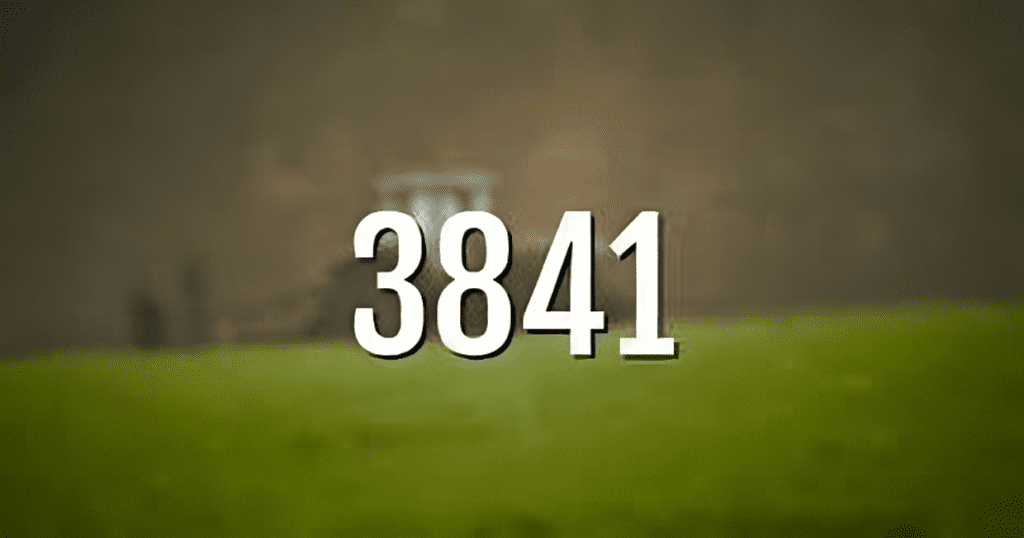
Here’s why:
- 3 is included based on Clue 2 (1937), where it’s in the code but needed to be repositioned.
- 8 is confirmed by Clues 1 (9285) and 5 (8524) as part of the code and properly placed in the second position.
- 4 is part of the code based on Clue 5 (8524), making it correctly positioned in the third spot.
- 1 is the well-placed digit from Clue 3 (5201), making it the final digit.
Congratulations, the code is cracked! Did you solve it too, or did you take a different approach?
Why Code Puzzles Improve Your Logic
Puzzles like “The Spy” code not only offer entertainment but also challenge your cognitive skills. They improve logical reasoning, enhance problem-solving abilities, and sharpen attention to detail. It’s like a workout for your brain, boosting mental agility and creativity. Plus, they’re fun! The more you engage in code-breaking puzzles, the quicker you’ll become at spotting patterns and solutions.
Final Thoughts: Embrace the Puzzle Challenge
The thrill of cracking “The Spy” code goes beyond solving a mere four-digit combination—it’s a test of perseverance, logical thinking, and the ability to piece together clues like a detective. Whether you succeeded or stumbled, remember that practice is the key to becoming a master codebreaker.
So, keep challenging yourself with more puzzles and codes. The world of code puzzles is vast, filled with mysteries waiting to be uncovered. And who knows? You might be the next great puzzle solver. Keep your wits sharp, your logic clear, and most importantly, have fun!
